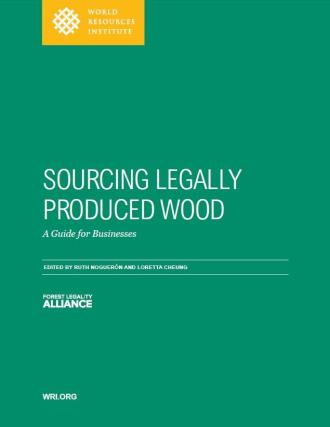
The introduction of demand-side wood legality policies, such as the 2008 amendment to the United States Lacey Act and the 2013 European Union Timber Regulation, fundamentally shifted business-as-usual for buyers of wood and wood products. To comply with these regulations, businesses must exercise due care to ensure that the operations of their entire upstream supply chain have been legally compliant. Considering the intricate web of players involved in the production, processing, and sale of these products, understanding demand-side legality requirements can be difficult.
That’s why, last year, the Forest Legality Alliance released the English-language version of Sourcing Legally Produced Wood: A Guide for Businesses (“Legality Guide”), which was drawn from the more comprehensive publication Sustainable Procurement of Wood and Paper-based Products: Guide and Resource Kit. To help businesses understand legality requirements, the Legality Guide provides an overview of demand-side timber regulations, including information on public procurement policies, accepted means of verification and compliance, penalties for violations, CITES-listed timber species, and countries with logging and export bans.
The global timber trade, however, connects a range of actors across a host of countries—from producers in Brazil, to manufacturers in China, to retailers in the United States. For that reason, the Forest Legality Alliance has now translated its Legality Guide into four additional languages: Chinese, French, Portuguese, and Spanish. These newly released versions provide companies with the opportunity to break linguistic barriers and underscore the important requirements of demand-side legality provisions throughout their organizations and to their suppliers.
The English-language Legality Guide is available on the Forest Legality Alliance website. To access the Chinese, French, Spanish, and Portuguese version, please visit the FLA Document Library.